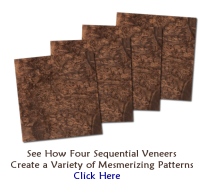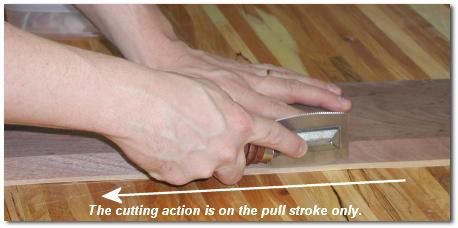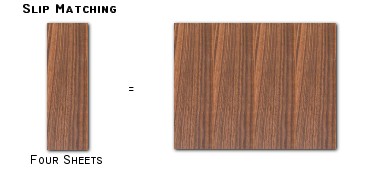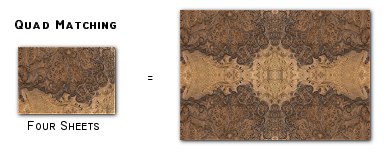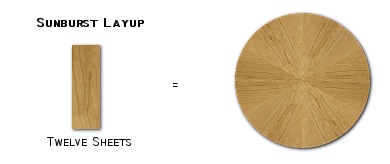 |
|
|
|
|
|
Part 1 |
My opinion is that the best jointing method requires a veneer saw. You'll find these saws very easy to use. And though they are made for right handed users and though I am a lefty, I've found little difficulty in using my right hand for the work. A veneer saw is not an expensive tool yet it cuts a perfect seam every time if it's properly sharpened. Just make sure the saw has the correct tooth profile before you begin. Click here for more information regarding blade grinds. For the most pleasing effect, the veneers should be laid side by side with one veneer face up and the other face down (with the same edges touching each other). This is called book matching. This way, one veneer is mirroring the other. For straight grained veneers, this minimizes the visual effect of using multiple veneers to lay up a single panel. If you are using a figured veneer (especially a burl veneer), book matching can uncover some very intriguing patterns. The Veneer Sawing Technique The saw is designed to cut on the pull stroke only. Start in front of the veneer so the blade is already in motion when it comes in contact with the veneer. Place adequate pressure downward on saw and be certain to keep it pressed against the straight-edge. It typically takes 4 to 7 passes with most species to cut through a veneer. Keep the saw moving past the veneer so the ends are cut cleanly. This method has always given me perfect results.
The straight edge I am using in this example is piece of walnut that has been passed across my jointer. It has a nice, clean edge. I placed some 100 grit self adhesive sandpaper on the bottom side of the board to help keep the veneers from shifting while being cut. When the cutting is finished, lay the two veneers together with the cut sides adjacent to each other. The grain patterns in the veneer should mirror each other almost perfectly if the veneers were cut evenly and if the veneers are laid up in the sequence from which they were sliced from the log. If the pattern is off a bit at one side, you may have to cut one or both veneers again. Imperfect Straight-Edge Tools Pattern Shift Problems
Frequently Used Veneering Words or Phrases Book Matching - Laying up two or more veneers side by side with opposite faces showing. This method can yield some amazing results with figured and burl veneers.
Slip Matching - Laying up two of more veneers side by side with the same face showing on each. This is often done on quartersawn veneers to eliminate the barber pole effect in which light reflects differently from every other piece of veneer in the lay up.
Butt Matching - Laying up two or more veneers end to end with opposite faces showing.
Quad Matching - A combination of book matching and butt matching in which four or more veneers are laid up side by side and end to end. As with book matching, this can create the most interesting patterns. To do this, you will need four sequential veneers. Play around with the rotation of the veneers to find the most pleasing or outrageous pattern. Cut and join two sets of two veneers using the technique above. Then use a veneer saw to cut the mating edges of the bookmatched pair to get a clean joint line for the final edge (making the quad match).
Sunburst Layup - A process of cutting veneers into pie slice pieces and laying them side by side with alternating face direction. This type of arrangement can create a stunning effect on even the most ordinary veneers. They are time consuming to make but the results can be outstanding.
|
|
|
|



